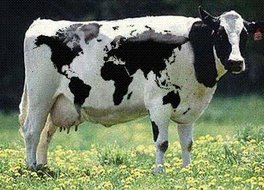Well, that's legislation for you -- but the ag committee can't do much else until this goes through. That means delays in funding the USDA. The USDA does a number of important things (food inspection, WIC and food stamps, not to mention basic research like mine) that really shouldn't get put on the back burner for too long.
But I guess that's why the bill is so difficult -- it has to cover all these things, too, along with little stuff like subsidies.
Senate passes farm bill, moves to conference under veto threat By Janie Gabbett on 12/17/2007 for Meatingplace.com The Senate on Friday voted 79-14 to pass a version of the 2007 farm bill the White House has already threatened to veto, sending the legislation to the House-Senate conference committee to hash out differences and agree a bill that the White House will sign.
"This legislation is fundamentally flawed. Unless the House and Senate can come together and craft a measure that contains real reform, we are no closer to a good farm bill than we were before today's passage," Acting Secretary of Agriculture Chuck Conner said in a statement.
Conner acknowledged he was disappointed the Senate approved the bill by such a wide margin. Broadly, the Administration opposes the cost of the $286 billion farm bill, which it says includes $22 billion in unfunded commitments and includes $15 billion in new taxes, as well as the fact that it did not limit subsidies to wealthier farm owners as much as the Administration sought.
Packer livestock ownership
The Senate version of the bill includes a livestock title (Title X) that contains a provision that would only allow meatpackers to own livestock 14 days before slaughter.
"We have a number of concerns with key aspects of that whole competition title," Conner said, when asked on a teleconference with reporters if the Administration would seek changes in the packer livestock ownership provision.
"We're going to be working very closely with the conferees in both the House and Senate to address this issue very directly as we go into the conference," Mark Keenum, under secretary for farm and foreign agricultural services, told reporters, adding that the provision is, "impeding commerce and trade with a specific commodity, in this situation livestock, and that's a slippery slope."
Senate Agriculture Committee Chairman Tom Harkin (D-Iowa) praised the livestock title, saying in a statement, "The bill's livestock title will promote market opportunities for producers; it will protect animal health; and it will strengthen enforcement of the Packers and Stockyards Act."
COOL and state-inspected meat
Both House and Senate versions of the bill contain mandatory Country of Origin Labeling (COOL) provisions that meat industry groups have agreed they can live with.
The House version of the bill includes a provision that would allow some state-inspected meat to cross state lines.
